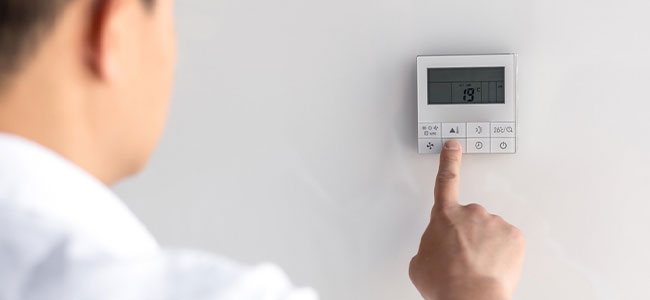
Understanding Thermoregulation Differences Between Male and Female in the Workplace
When people understand thermoregulation better, they can more effectively make decisions regarding their health alongside their primary care providers.
- By Mia Barnes
- Dec 11, 2023
The chromosomes that set men and women apart determine a person’s thermoregulation processes, which may result in wars over the thermostat in the workplace. It’s crucial to know the fact-based functions and which biases science proves incorrect to find a comfortable temperature for everyone, particularly as heat and cold hazards continually threaten to make the work environment unsafe. These are the primary differences everyone should know.
What Is Thermoregulation?
Thermoregulation is how people maintain their internal temperature. Although many people learned their bodies should be 98.6 degrees Fahrenheit, researchers now cite an acceptable temperature range of 95.4 to 99.3 degrees Fahrenheit.
Older individuals may have a lower body temperature due to energy conservation as they age. Medications can also interfere with a person’s body temperature reading. Anything above 99.3 degrees Fahrenheit counts as a fever, while anything below 95.4 degrees Fahrenheit could indicate hypothermia.
How Does Thermoregulation Work?
Overheated bodies cool themselves by sweating. They also increase the blood flow to the skin, redirecting the blood’s heat away from overly warm internal organs.
When a person gets too cold, their blood vessels constrict. The lack of blood means their fingers, toes and limbs become cold as the body conserves heat around the vital organs. Individuals may also release metabolism-activating hormonesand start shivering to produce muscle heat.
Differences in Male and Female Thermoregulation
Both men and women exercise thermoregulation for survival purposes, but there are a few key disparities to note between the sexes. Understanding these differences makes it easier to understand why some people feel too cold or hot in the office while others are completely comfortable. If everyone understands the science, the thermostat battles become much less personal.
Female Reproductive Hormones Influence Body Temperature
Cisgender women with regular menstrual cycles ovulate and shed their uterine lining with multiple monthly phases. One is the luteal phase.
During this phase, estradiol and progesterone cause a body temperature spike between 0.3 and 0.7 degrees Celsius or within 1 degree Fahrenheit. It makes a significant difference for female employees already sitting by a sunny window or away from the nearest air conditioning vent.
Female Genetics Cause More Heat Stress
Heat stress sends the blood to the skin to protect the organs. Research found that cisgender women are five times more likely to have orthostatic intolerance — intolerance of changes in vasodilation — than cisgender men of the same age and health.
Facts like this may be one of the reasons why cisgender men feel like they don’t need to see the doctor very often. The Cleveland Clinic found that 55 percent of cisgender men don’t get regular health screenings. No matter what makes them avoid the doctor, it doesn’t mean they aren’t affected by potential adverse effects of thermoregulation.
Sending blood to the skin to cool the organs makes the heart beat faster. Cisgender men experience coronary heart disease more often than cisgender women, but they may not know their heart is struggling against cholesterol buildup if they haven’t been to the doctor in years.
Reminding employees to use their paid time off (PTO) for annual medical checkups is helpful, but how does this information apply to thermoregulation?
Thermoregulation could cause too much heat stress for the heart to take if there are preexisting cardiac conditions. A potential heart attack might be avoided by going to the doctor regularly for checkups, especially for cisgender men. In the meantime, office management teams can keep the thermostat at a cool temperature to avoid creating heat stress for male employees.
Disproven Beliefs Regarding Thermoregulation
Scientific research is always adapting to new findings. These are the most prominent disproven beliefs about thermoregulation over the last few decades that could influence who gets more of a voice over the workplace thermostat.
Surface Area-to-Mass Ratio Affects Thermoregulation
A leading American Physiological Society study from 1980 evaluated temperature regulation responses in cisgender women and cisgender men within two different environments. One was hot and humid, while the other was hot and dry.
The cisgender women had lower body temperatures in the humid environment. The opposite was true for the cisgender male participants. Researchers theorized cisgender women could sweat more efficiently due to their smaller area-to-mass ratio. However, the latest research from the APS’ 2013 study found that cisgender men sweat more profusely, allowing them to cool off faster. The area-to-mass ratio wasn’t relevant.
It’s something to keep in mind when employees want to adjust the thermostat because they’re sweating slightly more than usual. Women in the office may need more warming tools, like cardigans or desks near sunny windows, to remain comfortable.
Cisgender Women Sweat More Efficiently
The APS’ 1980 study referenced above also concluded that cisgender women sweat more efficiently because the participants produced less sweat at the same core temperature as cisgender male participants.
However, later research from 2019 proved that cisgender female bodies need more time to cool down during heat acclimation than cisgender male bodies. Their ability to sweat less doesn’t represent a more efficient thermoregulation process. They’ll likely need the air conditioning fan turned on longer to cool off when the office feels too warm.
Understand Thermoregulation Better
The differences between cisgender male and female thermoregulation processes are important to remember when keeping everyone comfortable in the workplace. When people understand thermoregulation better, they can more effectively make decisions regarding their health alongside their primary care providers.